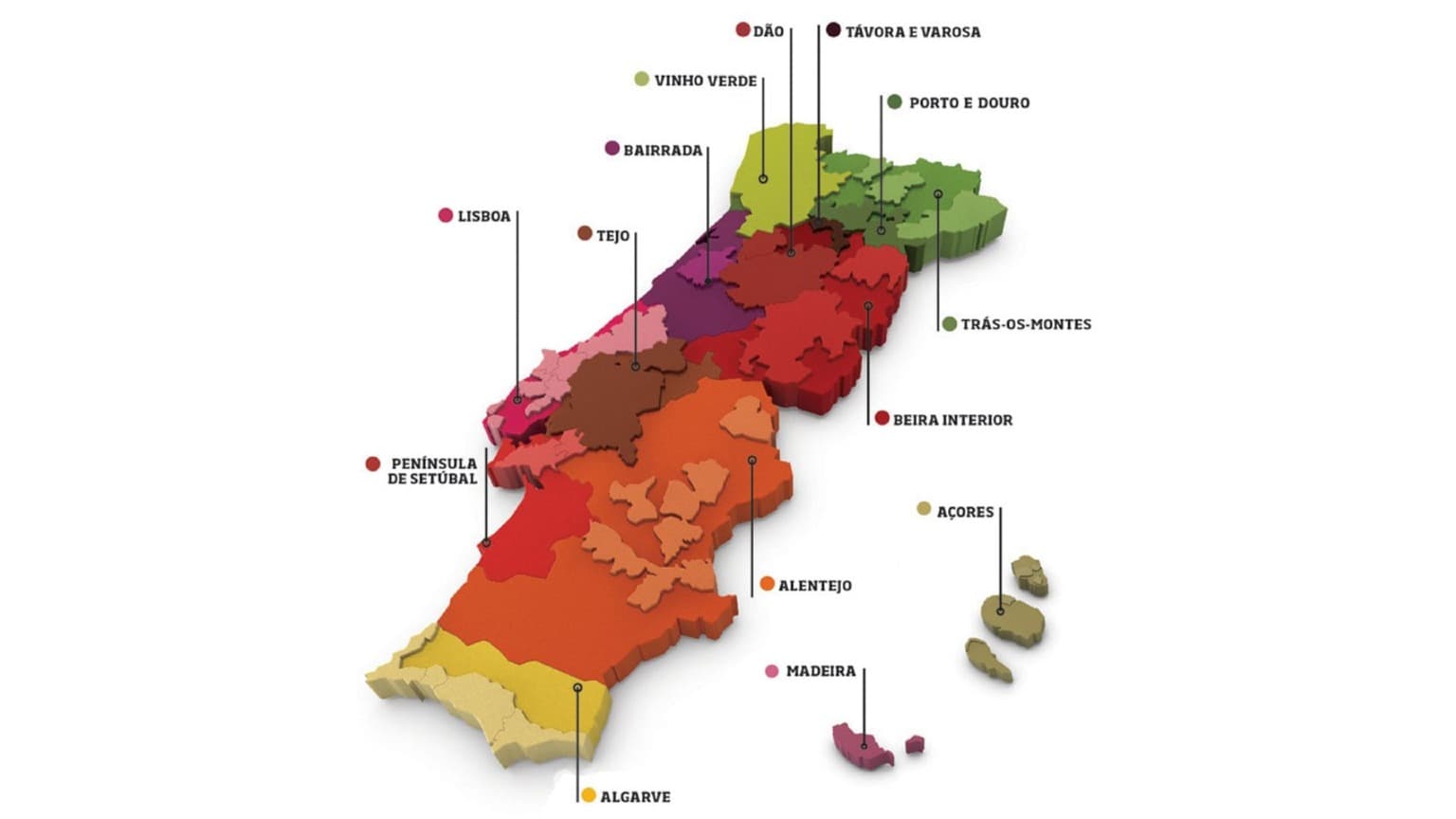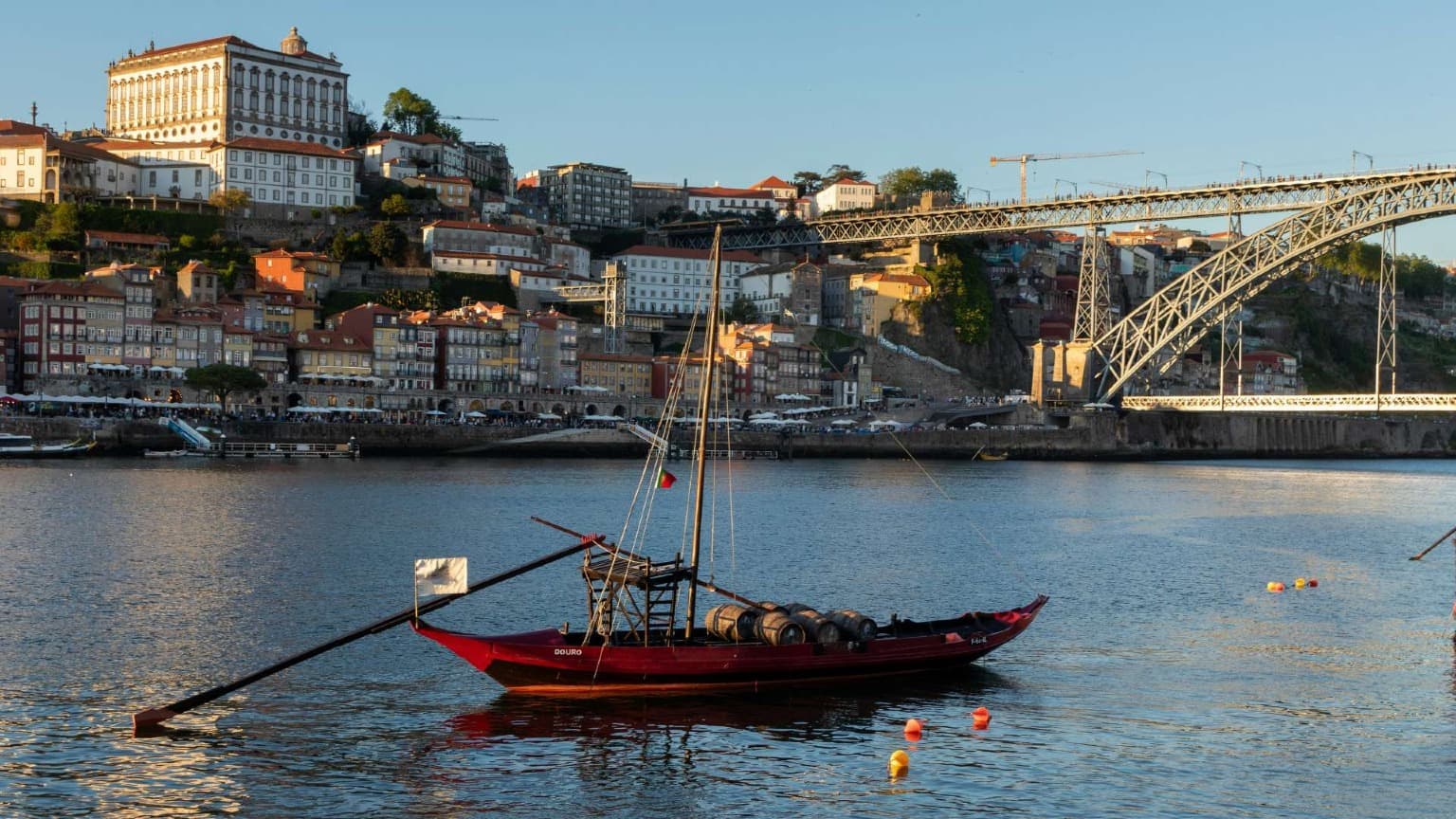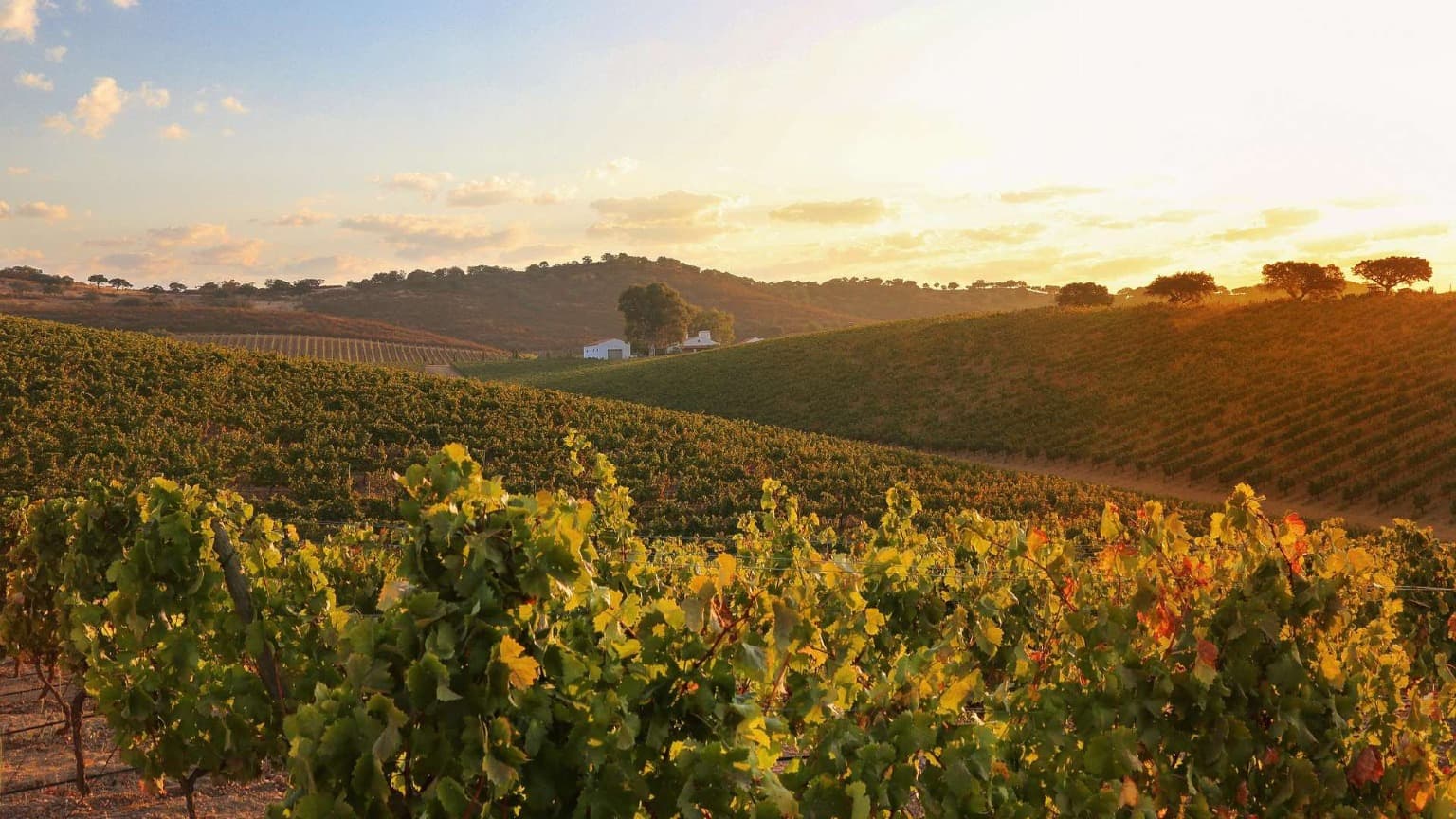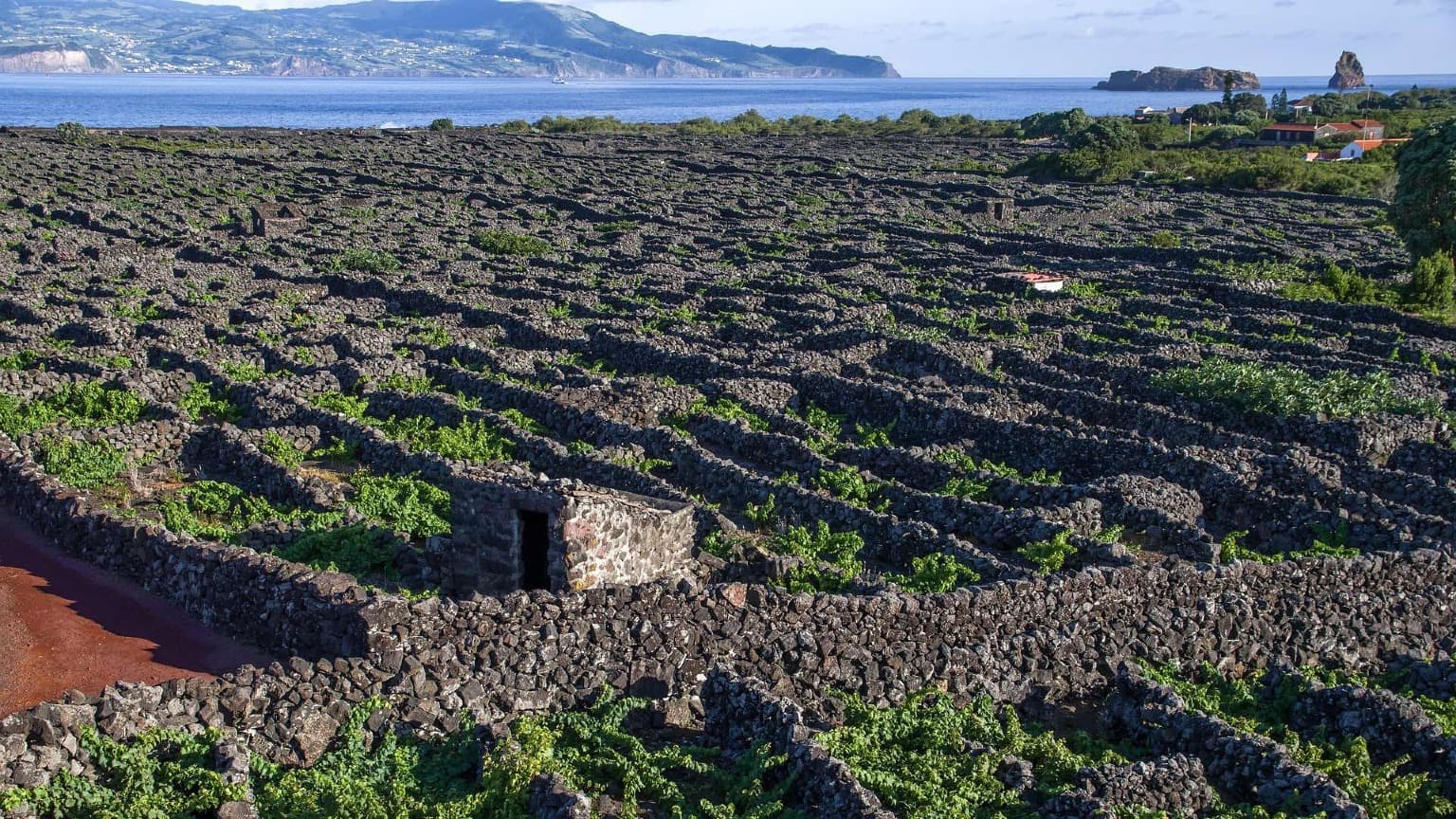The Ultimate Guide to the 14 Official Wine Regions of Portugal
July 4, 2025
Portugal may be small in size, but it's incredibly rich in terroirs, native grape varieties, and winemaking traditions. From mountainous terrain to sun-drenched plains and Atlantic to Mediterranean influences, the country is home to 14 officially recognized wine regions.
ViniPortugal — the national wine trade association — created the “Wines of Portugal” brand to promote Portugal as a top-quality wine producer on the global stage. And rightly so. In this guide, we invite you to explore the 14 unique Portuguese wine regions, each with its own identity, signature grape varieties, and distinct flavors.

Map of Portugal’s 14 official wine regions, showcasing the country’s geographic and oenological diversity
1. Vinho Verde
Located in the lush, Atlantic northwest of Portugal, just south of Galicia (Spain), Vinho Verde is one of the most distinctive wine regions in Portugal. Known for the Alvarinho and Loureiro grape varieties, the wines are light, crisp, and fresh — with naturally high acidity and a touch of effervescence.
2. Trás-os-Montes
Meaning “beyond the mountains,” Trás-os-Montes lies in the remote northeast of Portugal. While lesser-known, this historic wine region is gaining recognition for its authentic character and growing quality, thanks to centuries-old traditions and rugged terroir.
3. Porto and Douro
The Douro Valley is the world’s first officially demarcated wine region and a UNESCO World Heritage Site. Its steep terraced vineyards and schist soils produce the world-famous Port Wine, but also increasingly acclaimed Douro table wines. It’s widely considered one of the best wine regions in the world.

Historic rabelo boats once used to transport Port wine along the Douro River remain a symbol of Porto’s wine heritage
4. Távora and Varosa
Portugal’s smallest wine-producing region, Távora-Varosa lies south of the Douro and northeast of the Dão. Renowned for its high-quality sparkling wines, the region’s winemaking roots go back to Roman times, though it was the Cistercian monks who truly shaped its viticulture.
5. Dão and Lafões
Protected by mountains in north-central Portugal, the Dão region boasts granite soils and a unique microclimate. It is the birthplace of Touriga Nacional, Portugal’s flagship red grape. A new generation of winemakers is revitalizing the region, making it one of the most promising in the country.
6. Bairrada
A coastal region in central Portugal, Bairrada has strong Atlantic influences and is a pioneer in Portuguese sparkling wines. The name comes from barro (clay), referencing its fertile soils. Known for bold red wines from the Baga grape and fresh whites made from Fernão Pires (also called Maria Gomes).
7. Beira Interior
Stretching south of the Douro in Portugal’s interior, Beira Interior is a mountainous, granite-rich region with a harsh continental climate. While under the radar, it shows immense potential with local varieties like Arinto, Fonte Cal, Malvasia Fina, Bastardo, and Marufo.
8. Lisboa
Just north of Lisbon, this Atlantic-facing coastal strip is one of Portugal’s most productive wine regions. It produces fresh, aromatic wines and includes historic subregions like Colares, Bucelas, and Carcavelos. Comparable to Vinho Verde, Lisboa wines offer great acidity and vibrant aromas.
9. Tejo
Located in central Portugal along the Tagus River, the Tejo region is one of the country’s oldest wine-producing areas, known for traditional foot treading. The region balances heritage with innovation, featuring grapes like Touriga Nacional, Trincadeira, Castelão, Fernão Pires, and Arinto.
10. Setúbal Peninsula
South of Lisbon, nestled between the mountains and the sea, the Setúbal Peninsula has sandy and limestone-rich soils. It’s world-renowned for its Moscatel de Setúbal — a fortified wine with global acclaim. The region includes the Setúbal and Palmela DOCs, with key grapes like Castelão, Trincadeira, Arinto, and Muscat of Alexandria.
11. Alentejo
Covering nearly a third of Portugal’s wine production, the Alentejo is known for its rolling plains, hot climate, and diverse soils — from schist and granite to marble and limestone. Its wines are praised for balance and approachability. Reds include Alicante Bouschet, Aragonez, and Trincadeira; whites feature Antão Vaz, Arinto, and Roupeiro.

Golden light over the rolling vineyards of Reguengos de Monsaraz, one of the key subregions of Alentejo known for bold red wines
12. Algarve
Portugal’s southernmost wine region, the Algarve borders the Atlantic and Spain. With a Mediterranean climate and varied soils, it is rapidly developing its wine scene. The region includes four DOCs: Lagos, Portimão, Lagoa, and Tavira — all offering great growth potential.
13. Madeira
Madeira Wine is one of the world’s great fortified wines, prized for its longevity and unique aging process. The volcanic island of Madeira features fertile soils and a mild climate, making grape ripening a challenge. Main grape varieties include Sercial, Verdelho, Boal, Malvasia, and Tinta Negra.
14. Azores
Alongside the Douro, the Azores is one of only two Portuguese wine regions with UNESCO World Heritage status. The archipelago is made up of nine islands, with Pico Island standing out for its volcanic soils. The Verdelho grape, introduced by Franciscan monks, yields wines with marked acidity, salinity, and strong Atlantic character.

Pico Island’s unique volcanic rock vineyards form a UNESCO World Heritage Site and define the identity of the Azores wine region
FAQ – Frequently Asked Questions About Portuguese Wine Regions
How long has wine been produced in Portugal?
Wine production dates back to around 2000 BCE, beginning with the Tartessians — a pre-Roman civilization in the Tagus and Sado valleys. Wine was even used as currency at the time.
What was Portugal’s first demarcated wine region?
The Douro region, officially demarcated in 1756 by the Marquis of Pombal. He established the Companhia Geral da Agricultura das Vinhas do Douro to protect the authenticity and quality of Port Wine.
What are the most famous Portuguese wines?
Portugal is known for its fortified wines — such as Port, Moscatel, and Madeira — as well as increasingly respected red and white wines from regions like the Douro, Alentejo, and Dão.
What are the best wines in Portugal?
Notable names include the legendary Barca Velha (Douro), Quinta do Crasto, and wines by Domingos Alves de Sousa. Award-winning whites and fortifieds include Pai Chão Grande Reserva, Tempo by Anselmo Mendes, and the 1924 Moscatel de Setúbal by José Maria da Fonseca.
What are the key Portuguese grape varieties?
Touriga Nacional is Portugal’s most celebrated red variety. Other important red grapes include Touriga Franca, Tinta Roriz (Aragonez), Baga, Castelão, and Trincadeira. For whites: Alvarinho, Arinto, Loureiro, Fernão Pires, and Malvasia Fina stand out.
Learn More About Portuguese Wines on Our Blog
Want to dive deeper into Portuguese wine? Explore our articles on wine regions, grapes, traditions, and unique tasting experiences across Portugal:
• The Ultimate Guide to the Port Wine Cellars
• Top 5 Port Wine Cellars to Visit in 2025
• Vinho Verde: Portugal’s Unique and Historic Wine Region
• How the Douro’s Geography Shapes Its Wines
• Douro Valley: Wine Styles, Grapes & Tradition
Discover Portuguese Wines with Cooltour Oporto
At Cooltour Oporto, we invite you to discover family-owned wine estates in the Douro, traditional producers in Vinho Verde, and more. From tasting sessions in Porto to private Douro Valley wine tours and custom trips across Portugal, we offer authentic and expert-led wine experiences.